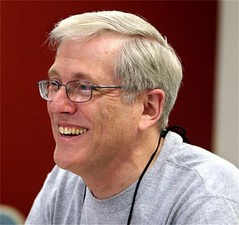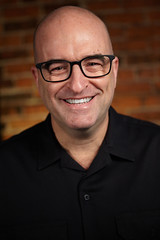
PREV ARTICLE
NEXT ARTICLE
FULL ISSUE
PREV FULL ISSUE
DAVID SCHENKMAN INTERVIEW, PART ONEGreg Bennick's latest interview for the Newman Numismatic Portal is with token expert David Schenkman. Here's the first of six parts, where Dave discusses getting started as a collector and dealer. -Editor Greg Bennick: Hi everybody, this is Greg Bennick with the Newman Numismatic Portal. I've been doing a series of interviews with numismatists, collectors and dealers from around the world, and this is yet another installment in that series. And I'm really excited today because today with me, I have David Schenkman. We're going to be talking about tokens and medals, we're going to be talking about his extensive numismatic history, and I'm really excited for this interview. So David, thank you so much for being here today. David Schenkman: It's my pleasure. Greg Bennick: Well, I wanted to dive right in just with some origins. And I think that my intention with interviewing you is going to take a couple of different paths. One is the basic path, meaning for folks who maybe haven't encountered tokens and medals and other things you've specialized in. And then the other path will be for more of the specialists, like we'll talk about some specific pieces and some more details about those avenues that you've explored, but let's start with your origins. What was your origin story in terms of coins and tokens and collecting? How did that all come about?
Greg Bennick: You know, it's interesting. I actually started with a blue book and a Red Book as well. And for those unfamiliar with the blue book, the blue book was wholesale pricing for coins in the United States. The Red Book, of course, was retail pricing. And I remember taking my blue book and going to see some coin dealers and sort of criticizing them as a ten year old saying that their coins were overpriced because I was reading wholesale pricing out of the blue book rather than retail out of the Red Book. I don't know if you had a similar experience or if you were using yours a little more wisely than I was using mine. David Schenkman: I just remembered that it gave me a guideline as to what potentially was out there. Greg Bennick: Ultimately, that's what the Red Book did, I think for a lot of people, was just let people know what was there and if there was a Red Book variety that was listed and all of a sudden made that a valid coin to pursue and to attempt to collect. So, when you started with coins, I'm assuming probably late forties, early fifties, and you got these first pieces and that silver dollar, then what happened to make tokens come about in your field of vision, as it were? David Schenkman: Well that was a lot later. By the time I was probably 15 years old, I was collecting fairly seriously coins. As a matter of fact, the man that lived across the street from me introduced me to antique cars and I helped him build them. I learned about them, but he was the manager of a bank and he let me come up and back then you could look at bags of silver dollars if they had them. And when I was 15 years old, I found a 1903-O, which means very little to people today because a big hoard of them came out when the government released silver dollars. But it was very rare then and I sold it for enough money to buy my first car when I was 15. And so, I was buying coins rather seriously by the time I was out of high school. And when I was 17, I joined the Navy, much to the dismay of my parents who wanted me to go to Juilliard or someplace like that. I put all my coins in my dad's safe deposit box, and when I got out, I got them back out and they had gone up a lot. I had a lot of coins that had gone up, things like I had rolls of 1931 pennies uncirculated. I had some 55 double dies that I had bought for very little money back then. So, I started selling coins part time.
To watch the complete video, see:
To read the complete transcript, see:
Wayne Homren, Editor The Numismatic Bibliomania Society is a non-profit organization promoting numismatic literature. See our web site at coinbooks.org. To submit items for publication in The E-Sylum, write to the Editor at this address: whomren@gmail.com To subscribe go to: https://my.binhost.com/lists/listinfo/esylum All Rights Reserved. NBS Home Page Contact the NBS webmaster 
|


